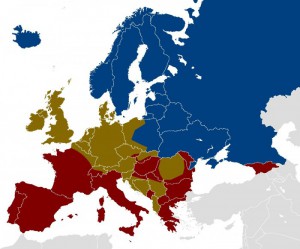You’ve been wondering about those as yet unanswered questions from the Amman conference, haven’t you? Ok, here goes.
Jose Cubero asked why there are no commercial faba bean hybrids. He had no answer. The yield gain is considerable. BTW, did you know that protein content in faba bean is not negatively correlated with yield potential, as is apparently the case in other pulses? And that you can have totally selfing varieties, with closed flowers? I need to learn more about this crop.
Raj Paroda asked if aeration might be the answer to decreasing methane emissions from paddies. Well, it’s possible. Work in Japan is showing that prolonged mid-season aeration can cut methane emissions down to zero. But what will this do to yield? And what will it cost? Of course, “[m]any rice varieties can be grown under much drier conditions than those traditionally employed, with big reductions on methane emission without any loss in yeild. Additionally, there is the great potential for improved varieties of rice, able to produce a much larger crop per area of rice paddy and so allow for a cut in the area of rice paddies, without a cut in rice production.” See? Even when it’s not about germplasm, it’s really about germaplasm.
Theib Oweis wondered whether we shouldn’t measure — and select for in breeding programmes, by implication — productivity on the basis of unit of water consumed rather than of land used. Indeed we should, certainly in the dry areas. Potatoes had the highest yield per cubic meter of water of the crops on his list, and olives the highest economic return per cubic meter of water. You can get 8 t/ha of wheat, but the highest water productivity is actually at 6 t/ha. You need 1000 kg of water to grow 1 kg of wheat. I could go on and on, he had lots of figures like this.
And would you believe it, Ken Street did indeed think of a better way of identifying germplasm for evaluation, and it’s called FIGS.
How many did you get?

